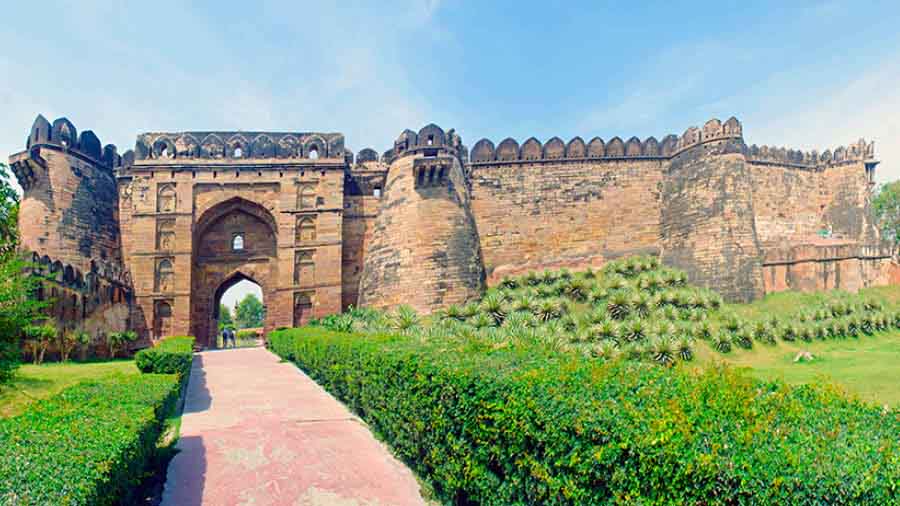Bidar is a non-descript town in the northeastern corner of Karnataka, bordering Telangana. Like most small towns in the country, Bidar has its share of chaotic traffic passing through ruined gateways past towering fortified walls, complete with bastions and topped with battlements. No wonder Bidar has its share of history!
The mighty citadel of Bidar flourished under the patronage of the Bahmani and Barid Shahi rulers, who turned it into one of the most formidable citadels of medieval south India. Bidar’s rise to prominence happened in 1432, when the then Bahmani sultan Ahmed Shah Wali I (reign: 1422 – 36) shifted his capital from Gulbarga to Bidar. Soon, the sleepy hamlet turned into a mighty citadel — with mosques, madrasas, palaces, gardens and tomb complexes. The small existing fort of Bidar was also turned into a citadel.

Bastions and fortification walls of Bidar Fort
William Dalrymple wrote in his best-selling book, White Mughals: “In every direction, great loops of bleak black crenelations swept over miles over hills and down steep valleys, a seemingly endless expanse of towers and walls, gateways and bastions, arch-shaped merlons and fortified escarpments.”
Bidar is located about 150km from Hyderabad and can be a place for an overnight tour or a day trip for those interested in history. Although Bidar has about half a dozen historical sites, the fort stands out among the rest. The gigantic fort is surrounded by 5.5km-long, thick walls strengthened with 37 enormous bastions and is punctured by seven arched gateways with zig-zag pathways leading to the interiors of the fort. The defensive mechanism also consists of a series of underground tunnels and passageways providing easy and quick escapes during times of emergency.
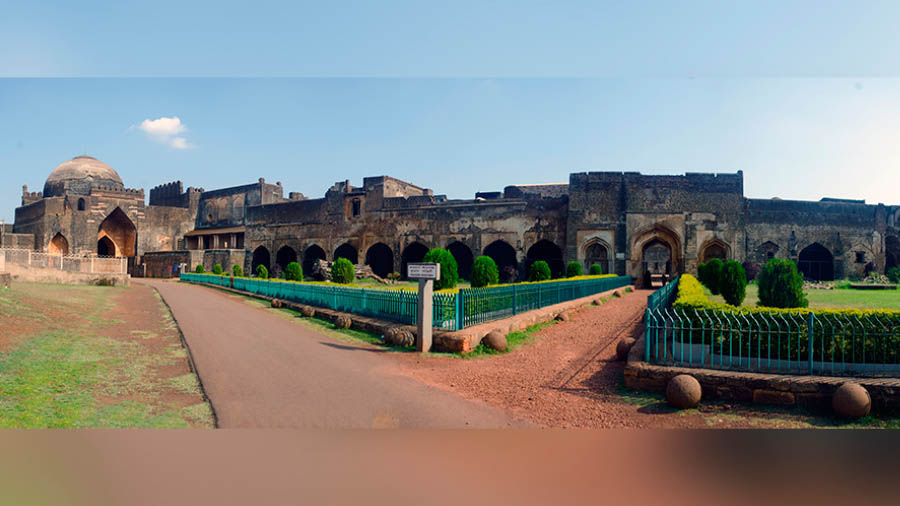
Inside the Bidar Fort, with Gumbad Darwaza on the left
Today, entry to the fort is through two gateways in the southeast corner of the fort. The first gateway is known as Sherza Darwaza, while the second one is known as Gumbad Darwaza. Both are domed structures with arched entrances along with ornamental battlements and decorated with frescoes.
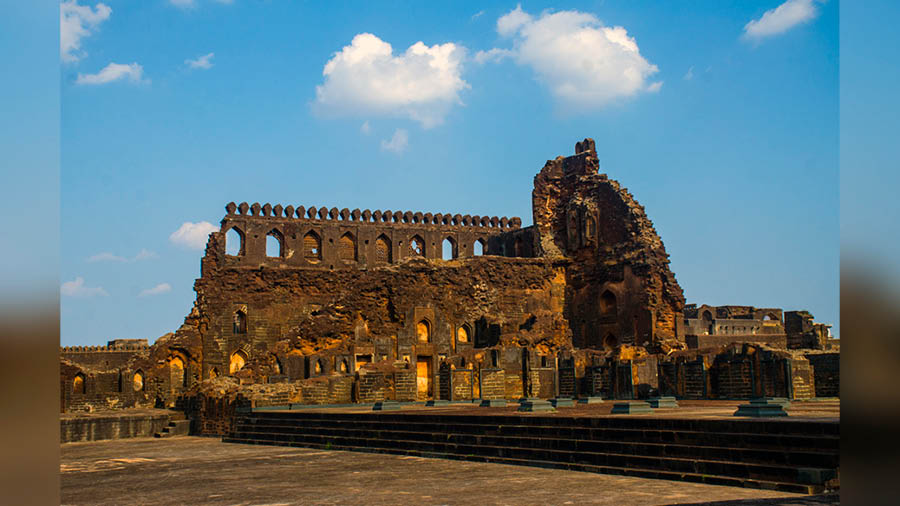
Interiors of the diwan-e-aam
A habitat centre on the right greets visitors to the interiors of the fort. Photos, write ups along with artifacts, narrate the story of Bidar right from the prehistoric times. Opposite to the habitat centre is the Rangeen Mahal, literally meaning the colourful palace. It is known for its coloured fresco and glazed tile ornamentations. It happens to be the most beautiful part of the fort.

The Solah Khambha Mosque inside the fort
Another star attraction of the fort is the Solah Khambha Masjid, literally meaning the mosque with 16 pillars. The mosque complex comes with a decorated fountain — complete with water channels — and is surrounded by landscaped gardens maintained by the Archeological Survey of India (ASI). The path meanders through the undulating landscape of the Bidar Fort going past the diwan-e-aam, diwan-e-khas, gun-powder magazine and several other ruined unknown structures. Many of the structures have no boards, keeping the visitors in the dark, but it does give a sense of exploring the unknown!
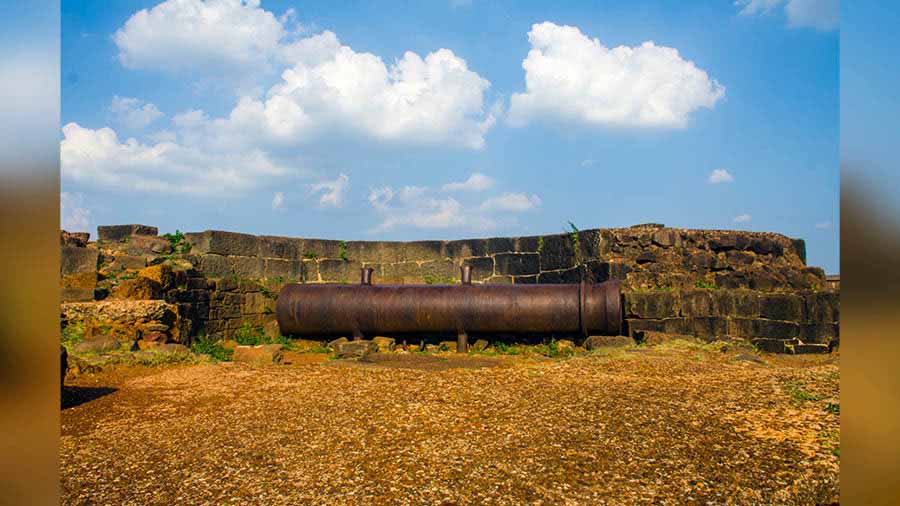
A cannon atop the black bastion
The path leads to a massive bastion known as the black bastion. A flight of stairs leads to the top of the bastion, which houses a giant cannon. The elevation provides a bird’s eye view of the scattered structures of the fort merging with the modern-day cityscape of Bidar. But Bidar has something more to offer beyond the fort and an overnight tour is absolutely necessary to explore the historical citadel of Bidar.
Travel information:
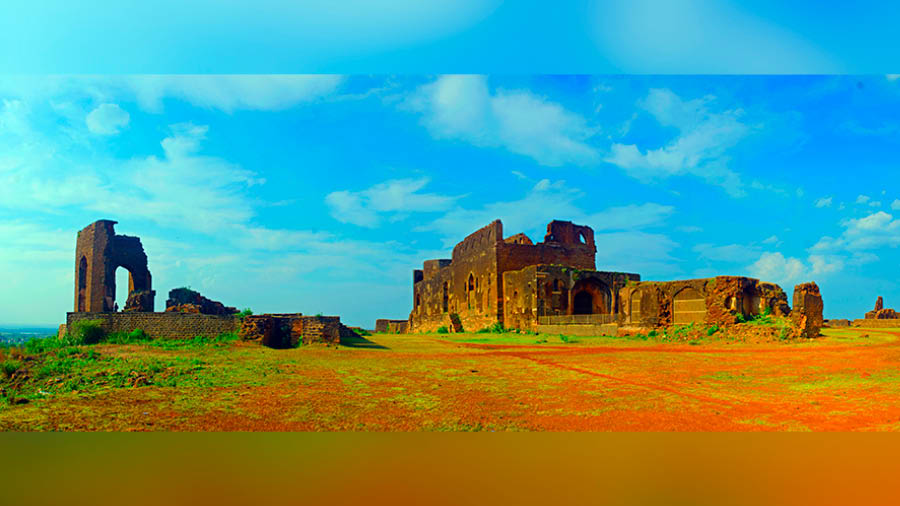
Scattered ruins of the Bidar Fort
Getting there: Bidar is well-connected with Hyderabad (150km away) by road and rail. Buses are available from MG Bus Stop in Hyderabad. Fare: ₹210; Time: 4 hrs
Places to stay: There are several hotels of different budget near the bus stand
Places to eat: The bus stand area has several eateries serving all sorts of veg and non-veg food
Getting around: Autos are the best options. There are no fixed rates, so bargain
Fort timings: 9am – 5pm
Entry fee: Free
Photography: Allowed (except inside the habitat centre)

